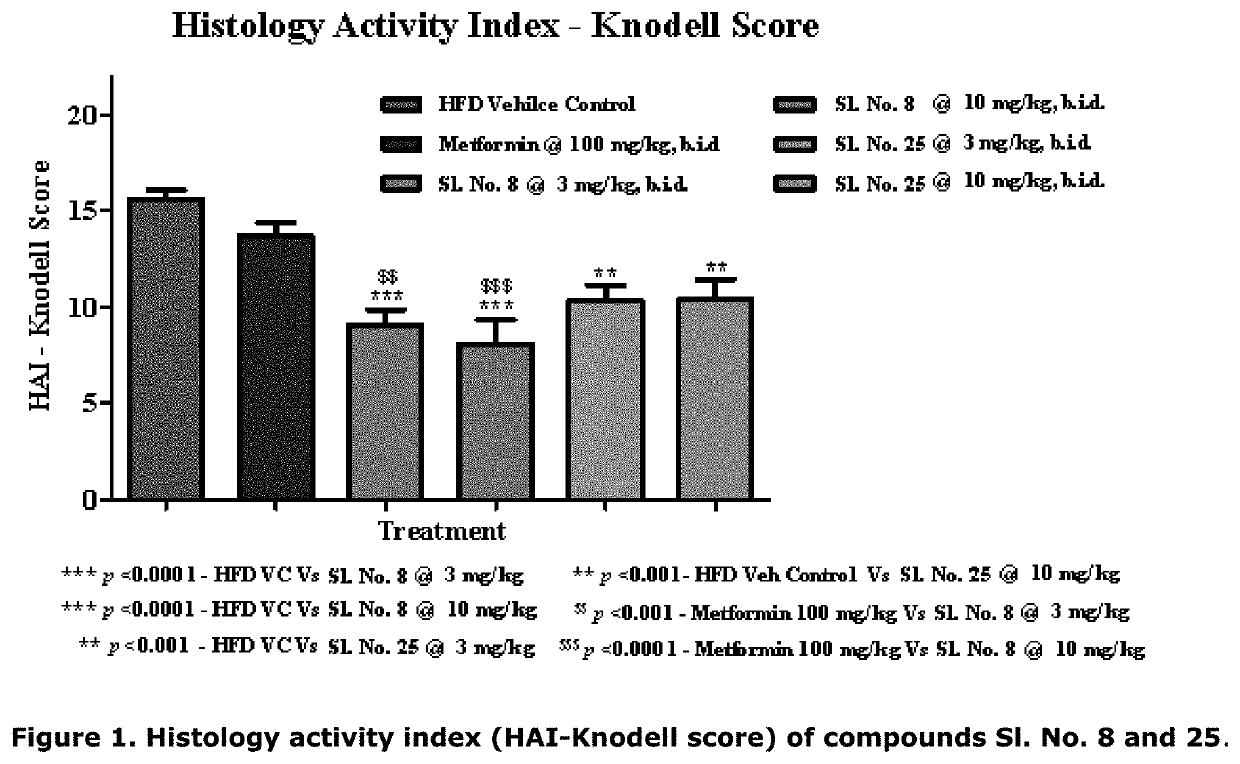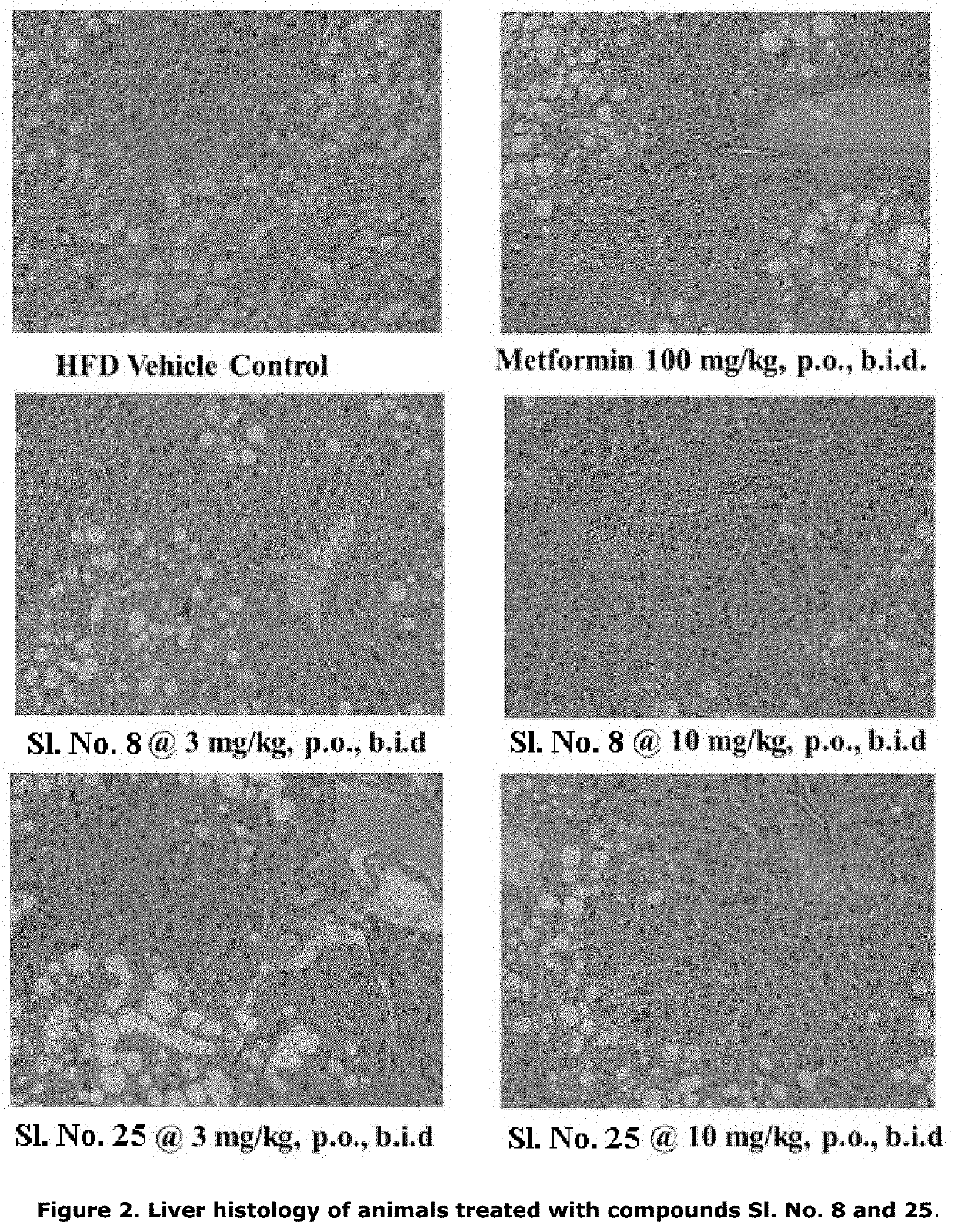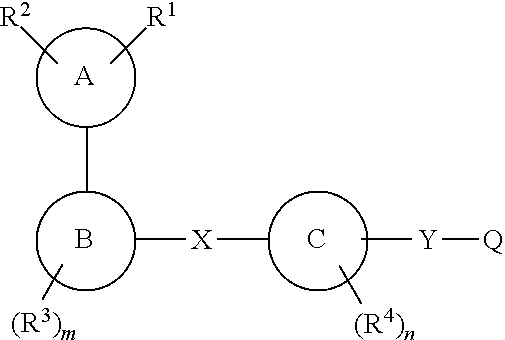Method of treatment of non-alcoholic steatohepatitis, nash
a steatohepatitis and non-alcoholic technology, applied in the field of non-alcoholic steatohepatitis treatment methods, can solve the problems of nash recurrence, no approved drugs, and likely to be denied, and achieve the effect of reducing liver inflammation and slowing the progression of nafld
- Summary
- Abstract
- Description
- Claims
- Application Information
AI Technical Summary
Benefits of technology
Problems solved by technology
Method used
Image
Examples
example 1
Testing
[0189]TNFα and MCP-1
[0190]Tumor Necrosis Factor-α (TNF-α) is an inflammatory mediator secreted by several inflammatory cell types, including monocyte / macrophages, neutrophils, and T-cells, but also by many other tissues, such as the endothelium, adipose tissue, or neuronal tissue. In the liver, TNF-α is secreted directly by hepatocytes and Kupffer cells or indirectly by abdominal fat. Several studies have shown that TNF-α is a key factor in the development of NAFLD and NASH in both humans and animals.
[0191]Monocyte chemotactic protein-1 (MCP-1) is a major chemokine responsible for the recruitment of leukocytes into the liver during hepatic inflammation through the activation of CCR2 receptor displayed on inflammatory cells. MCP-1 levels appear to be increased in NASH patients and in diet-induced NASH models.
[0192]The inhibition of TNF-α in targeted myeloid cells prevents the infiltration of monocytes by blocking the production of MCP-1, lessening the progression of NASH.
[0193...
example 2
esting
[0203]The model of diet induced obesity in mice by chronic administration of high fat diet (HFD, 60% kcal for periods extending more than 4-6 months) results in the development of obesity, insulin resistance, inflammation and fibrosis. This model mimics certain basic features of NASH found in clinical setting in a milder form. Clinically, development of steatosis is followed by progression to NASH in up to one-third of patients with NAFLD. NASH is diagnosed when hepatocellular steatosis occurs with concurrent necroinflammatory reactions of the liver and hepatocellular ballooning with or without fibrosis and / or cirrhosis. Lobular inflammation (usually in acinar zone 3) and portal inflammation are both present in NASH. Lobular inflammation is followed by infiltration of affected areas by innate immune cells. Portal inflammation is common and usually mild. Other histological lesions present in NASH include hepatocellular ballooning, fibrosis, apoptotic bodies, sinusoidal collagen...
PUM
| Property | Measurement | Unit |
|---|---|---|
| composition | aaaaa | aaaaa |
| energy barrier | aaaaa | aaaaa |
| pH | aaaaa | aaaaa |
Abstract
Description
Claims
Application Information
 Login to View More
Login to View More - R&D
- Intellectual Property
- Life Sciences
- Materials
- Tech Scout
- Unparalleled Data Quality
- Higher Quality Content
- 60% Fewer Hallucinations
Browse by: Latest US Patents, China's latest patents, Technical Efficacy Thesaurus, Application Domain, Technology Topic, Popular Technical Reports.
© 2025 PatSnap. All rights reserved.Legal|Privacy policy|Modern Slavery Act Transparency Statement|Sitemap|About US| Contact US: help@patsnap.com



